N S Lewis
Substitutions near the hemagglutinin receptor-binding site determine the antigenic evolution of influenza A H3N2 viruses in U.S. swine
Lewis, N S; Anderson, T K; Kitikoon, P; Skepner, E; Burke, D F; Vincent, A L
Authors
T K Anderson
P Kitikoon
E Skepner
D F Burke
A L Vincent
Abstract
Swine influenza A virus is an endemic and economically important pathogen in pigs, with the potential to infect other host species. The hemagglutinin (HA) protein is the primary target of protective immune responses and the major component in swine influenza A vaccines. However, as a result of antigenic drift, vaccine strains must be regularly updated to reflect currently circulating strains. Characterizing the cross-reactivity between strains in pigs and seasonal influenza virus strains in humans is also important in assessing the relative risk of interspecies transmission of viruses from one host population to the other. Hemagglutination inhibition (HI) assay data for swine and human H3N2 viruses were used with antigenic cartography to quantify the antigenic differences among H3N2 viruses isolated from pigs in the United States from 1998 to 2013 and the relative cross-reactivity between these viruses and current human seasonal influenza A virus strains. Two primary antigenic clusters were found circulating in the pig population, but with enough diversity within and between the clusters to suggest updates in vaccine strains are needed. We identified single amino acid substitutions that are likely responsible for antigenic differences between the two primary antigenic clusters and between each antigenic cluster and outliers. The antigenic distance between current seasonal influenza virus H3 strains in humans and those endemic in swine suggests that population immunity may not prevent the introduction of human viruses into pigs, and possibly vice versa, reinforcing the need to monitor and prepare for potential incursions.
Citation
Lewis, N. S., Anderson, T. K., Kitikoon, P., Skepner, E., Burke, D. F., & Vincent, A. L. (2014). Substitutions near the hemagglutinin receptor-binding site determine the antigenic evolution of influenza A H3N2 viruses in U.S. swine. Journal of Virology, 88(9), 4752-63. https://doi.org/10.1128/JVI.03805-13
| Journal Article Type | Article |
|---|---|
| Acceptance Date | Feb 5, 2014 |
| Publication Date | Apr 4, 2014 |
| Deposit Date | Aug 21, 2018 |
| Publicly Available Date | Aug 23, 2018 |
| Journal | Journal of Virology |
| Print ISSN | 0022-538X |
| Electronic ISSN | 1098-5514 |
| Publisher | American Society for Microbiology |
| Peer Reviewed | Peer Reviewed |
| Volume | 88 |
| Issue | 9 |
| Pages | 4752-63 |
| DOI | https://doi.org/10.1128/JVI.03805-13 |
| Public URL | https://rvc-repository.worktribe.com/output/1405710 |
Files
11691.pdf
(3.4 Mb)
PDF
You might also like
Detection of Clade 2.3.4.4b Avian Influenza A(H5N8) Virus in Cambodia, 2021
(2022)
Journal Article
Downloadable Citations
About RVC Repository
Administrator e-mail: publicationsrepos@rvc.ac.uk
This application uses the following open-source libraries:
SheetJS Community Edition
Apache License Version 2.0 (http://www.apache.org/licenses/)
PDF.js
Apache License Version 2.0 (http://www.apache.org/licenses/)
Font Awesome
SIL OFL 1.1 (http://scripts.sil.org/OFL)
MIT License (http://opensource.org/licenses/mit-license.html)
CC BY 3.0 ( http://creativecommons.org/licenses/by/3.0/)
Powered by Worktribe © 2025
Advanced Search
